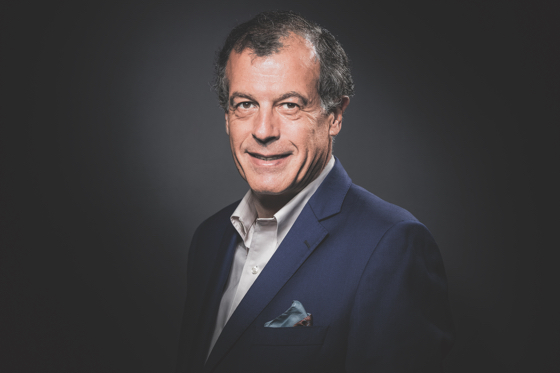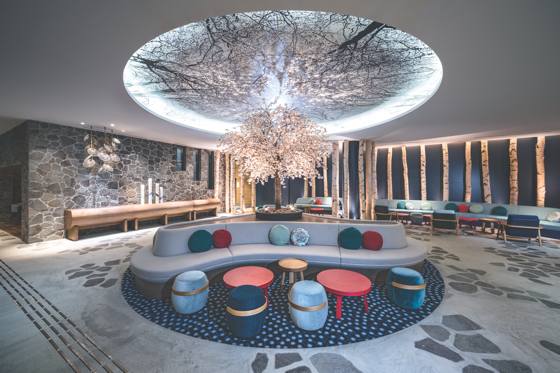Three years ago, a nasty and protracted takeover battle left an already weakened Club Med in limbo. But after Chinese conglomerate Fosun International prevailed, the Paris-based brand regained its footing and recovered from years of losses and a flagging customer base too dependent on France. Fosun’s backing gave Club Med the muscle to push forward with an upscale repositioning of the brand and a major push into China, where demand for all-inclusive products is strong.
Today, the company has a presence in more than 30 countries with 70-plus beachfront, mountaintop and urban resorts, with plans to add five more in each of the next five years. Club Med CEO and President Henri Giscard d’Estaing recently assessed the prospects for this iconic brand.
HOTELS’ Investment Outlook: How would you characterize today’s Club Med?
Henri Giscard d’Estaing: Club Med is the only global brand for family holidays. The company has gone through a massive process of transformation in the last 10 years, and that has accelerated in the last three years through privatization and our partnership with Fosun. We have made major moves to focus on the upscale market and target affluent families and couples. In this process we closed half of our resorts — more than 60 total — and massively invested in upgrades to the existing resorts, to bring them to 4- or 5-trident standards.
Today, close to 70% of our business is families. Eight years ago the majority of our guests were French; today they make up less than a third. China is now our second-largest market in terms of clients.
Thanks to our “happy digital” strategy, our business is increasingly from direct sales. We now have more than 30 Club Med internet sites around the world, in 14 languages, and we see more than 40 million visitors to those sites.
With all these changes, it would be correct to say that Club Med is a new animal.

HIO: Where are you developing?
HGE: Our objective is to open three to five new resorts per year, and in the next three years we will open 15. This year we will have opened two new ski resorts, one near Geneva, Switzerland, and the second one in Hokkaido, Japan. We are building in Charlevoix, our first Club Med in Canada. We are planning additional projects in Sri Lanka, Vietnam, Sicily, Marbella, China and elsewhere. In the Caribbean, we have already started construction of a resort in Punta Cana, Dominican Republic, next to our existing property.
HIO: What emerging markets are you keenest on?
HGE: Obviously, China. We are planning to accelerate our growth through Club Med Joyview, which is a specific adaption for China. It is designed for short stays, accessible by car from large cities, mainly for weekends and family holidays. Even wealthy Chinese families rarely have second homes — so the need to have a place sufficiently away from large cities for a weekend break or family holiday is greater in China.
HIO: Do you think the Club Med brand has an image problem, and do you think that has been overcome?
HGE: Awareness of the brand is and has always been very high. What we had to correct was the brand image was a bit blurred because we had both midscale and upscale resorts and a focus on both families and singles. Now the brand is focused on upscale and families and couples. When we look at reports on TripAdvisor.com and other ratings websites, we can see that many of our resorts are ranked number one in their destination. And last year bookings rose 6.6%, the biggest increase since 2009.

HIO: Are you concerned about the Chinese government’s increased scrutiny of companies like Fosun that are acquiring international brands?
HGE: Fosun’s profit compound annual growth rate in the last 10 years is close to 30%, and its net debt ratio is below 50%. So Fosun is a successful and financially healthy company that has continued to develop globally. For example, it recently acquired the fashion brand Lanvin as well as a very successful health food company, San Hubert.
HIO: How is Club Med adapting to the needs of younger travelers?
HGE: Active couples and families are looking for an experience, and we are lucky: Club Med has always been in the experiential holidays business. We operate large ski schools, tennis schools and golf schools and our own golf courses. We even have specific experiences and instruction for parents and kids who want to try a flying trapeze in many of our resorts.
HIO: How important is the MICE segment to the brand?
HGE: It is a growing part of our business. In transformation process we looked closely at accessible destinations – close to places where there are a number of larger companies or next to international airports – and are in the process of revamping all those facilities and creating an offer that is a combination of meetings and incentives. Companies can go to Club Med and have everything organized and done in one place, and save money, because they can benefit from the activities.
HIO: What does Club Med bring to the table for partners?
HGE: One of the major advantages of the all-inclusive model is that we can go into places where there are not many things to do nearby, at least when we arrive. We are in a position to create value around that real estate. If you look at history, we created Cancun as a destination. We were one of the first to develop in Bali, Phuket and Marrakech. This is also the case in mountain destinations. So we are looking at partners that want to have a good manager that can offer a high level of occupancy and ADR but that also has the ability to create a destination and create value around it.
